Eliminate time confetti from your life.
In her brilliant book Time Smart researcher Dr Ashley Whillans describes time confetti as the little bits of seconds and minutes that are lost to unproductive multitasking (e.g. texting and checking social media). She says:
“Each bit alone seems not very bad. Collectively, though all that confetti adds up.”
This reminded me of something I had seen on social media earlier in the year. A pregnant woman at my gym had shared a video of her baby’s gender reveal party. If you’re not familiar with these celebrations, they are designed to ‘reveal’ the baby’s sex to the expected parents’ family and friends.
This party was being held in a local park close to where I live. It involved the couple popping a massive balloon that was filled with thousands of bits of confetti, glitter and mini balloons. The balloon was popped and the couple kissed as blue plastic confetti and glitter were scattered all over the park and mini blue balloons released into the atmosphere.
It was Instagram perfect. But something really bugged me about the whole thing.
My first thought wasn’t “It’s a boy!” but rather “Are they going to clean that mess up?”
This mum and dad-to-be had just polluted the environment for their unborn child.
Now at this point you may be thinking . . .
“Stop being such a party pooper Jane! It’s just one party! What’s all the fuss about?”
But please, stay with me . . .
Consider the environmental impact of thousands of gender reveal parties being held all over the world. Every. Single. Day.
That plastic rubbish adds up.
This is why we have oceans full of plastic and seabirds’ stomachs bulging full of the stuff.
Where’s the thought for other creatures and future generations?
Put simply, there is no thought. It’s mindless behaviour.
And time confetti works like this, too.
We’re having fun now (by checking our phones and distracting ourselves with novelty and instant gratification). It seems harmless, right? A few seconds and minutes spent checking our phones here and there . . . but it adds up. We don’t realise that we’re actually hurting our future selves.
Long-term, we pay a high price. Just like confetti and glitter pollutes the natural environment, with time confetti we’re polluting our mental environment and messing with our well-being.
Firstly, time confetti shred up your leisure time. It shatters your leisure time into lots of small pieces.
Time confetti makes your leisure time less enjoyable.
Here’s a simple example to illustrate this . . .
Let’s say you’re relaxing at the beach and you check your phone. You see a new email about a project/assignment that’s due in a few days. How are you feeling now? Are you still feeling relaxed? No, of course not. You’re feeling slightly stressed about the looming deadline.
You’re no longer enjoying the beach. That email has just catapulted you right out of the present moment.
As Dr Whillans states:
“We used to enjoy the gym. Now we one-handedly type out a reply to the boss while trying not to fall off the treadmill. We used to have uninterrupted family dinners. Now we have hushed phone calls over cold meals. We used to have relaxing picnics. Now we have phone meetings in “private” park-side bathroom stalls. We carry the office in our back pockets, making it difficult to disconnect.”
Oh, how I could relate to this!
A few weeks ago, I was at the gym doing stretches at the end of my workout. For some reason, I started texting my husband about something I’d heard on the radio.
Usually, at the end of a workout I feel clear minded, grounded and refreshed. But not this time. I felt scattered and frenzied. I can now see how my jumbled mental state was a result of time confetti.
Why? Because you’re multitasking.
There I was at the gym rapidly switching between holding a stretch and sending a text and then doing another stretch and sending a text . . . my mind wasn’t focused on the job of just holding the simple stretch.
As neuroscientist Daniel Levitin states in his book The Organized Mind: Thinking Straight in the Age of Information Overload:
“. . . the kind of rapid, continual shifting we do with multitasking causes the brain to burn through fuel so quickly that we feel exhausted and disoriented after even a short time. We’ve literally depleted the nutrients in our brain. This leads to compromises in both cognitive and physical performance.”
Start to notice when you’re creating time confetti. Track your time confetti – every time you get distracted make a note of it (it could be a tick on a card). Building self awareness around time confetti is the first step towards making positive change.
Then you want to go about dealing with distractions that hijack your brain and create time confetti (especially digital distractions). For ideas on how to do this, check out my blog posts on creating a focus force field and Digital Minimalism.
It also helps to deliberately slow down. We live in a culture that is addicted to fast paced living. Our addiction to technology and constant checking only makes this worse. Nancy Colier notes in her book The Power of Off:
“We are now accustomed to ongoing stimulation and feel anxious and lacking without it. There is a continual sense that we should be doing something, which then causes us to grab our smart phones to seek some relief from that anxiety.”
I have found it makes a massive difference to build practices into my life that force me to slow right down. Yin yoga works a treat. This is a gentle yoga practice where you hold each pose for several minutes.
This practice is teaching me how to slow down and live life at different speeds (note: for many years I lived life at one speed and that was full speed – Go! Go! Go!).
Since starting yin yoga, I have noticed that when I slow down a little and take my time doing things, I am in a better position to pause and think:
“Do I really want or need to check my email right now? Do I want to create time confetti and all the problems that come with it?”
I can experience the urge to want to click and check my email, but the pause helps me to think twice and reconsider my actions.
But perhaps the simplest way to deal with time confetti is to do this . . .
That’s right. Delete them. Go cold turkey on the lot.
That’s what I recently did. This resulted in a dramatic reduction in time confetti. My days now feel a lot longer. My brain feels calmer, too (you can read more about why I deleted my social media accounts here).
Think about it . . .
If social media is not in your life, how can it interfere with your leisure time and attention?
It can’t. Simple. Problem solved.
But I realise, this may seem extreme and not practical for your life circumstances. If that’s the case, I get it.
I recently met a young artist who had made the decision to get rid of her mobile phone for good. She invested in a landline, watch, digital camera and map book for her car. I thought, “Woah! That’s next level . . . no way could I do that. I don’t want to do that!” But when she tells me she feels happier, more productive and has less time confetti in her life, I believe her.
You need to do what’s right for you. But just like time confetti accumulates, adopting tiny actions that lead to states of calm and being more present is also going to add up over time. So start with whatever is easiest for you to do and take it from there.
Share This:
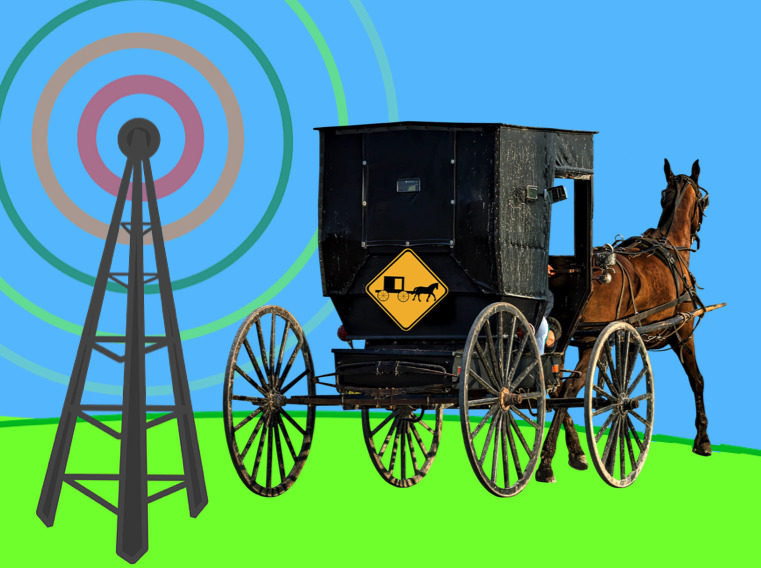
If I’m honest with myself, there was a time when technology was doing me more harm than good.
On Facebook, I frequently fell into the comparison trap (comparing myself to people who had posted delicious dinners, amazing holiday photos, etc).
On Twitter, I’d get baited by trolls (and I’d foolishly take the bait).
Throughout the day, I’d constantly check my phone and email, which left me feeling jittery and chaotic.
Big Tech was constantly hijacking my time, energy, and attention. Every time I retreated to my devices for a quick shot of dopamine, I moved further away from my goals. I didn’t like this, and I knew something needed to change.
Over the past three years, I’ve implemented many practices to regain control of my time, energy, and attention (including deleting all social media).
These practices have made a big difference in my life. But I’m well aware that not everyone feels the same way I do about Big Tech, nor are they in a position to be able to delete all their accounts.
Following a school presentation, I spoke with a small group of year 8 students. I shared with them that I didn’t use any social media, to which a year 8 girl quickly chimed in:
“My grandma has Facebook. What’s your excuse?”
Her words struck me like a bolt of lightning. I didn’t know what to say.
It highlighted how adopting these apps is the norm for a young person.
When everyone else has a smartphone and is using social media (including your parents and grandparents), why would you question using them?
I couldn’t forget the year 8 girl’s words. While I appreciated her candidness, it left me slightly disturbed.
At the same time, it increased my motivation to resist Big Tech. I started searching for role models: people actively resisting Big tech and this hyperconnected, fast-paced way of life.
One community kept popping up in my research: the Amish.
The Amish are often portrayed as being technologically impaired. A classic example is Weird Al Yankovic’s music video Amish Paradise (a parody of Coolio’s mega-hit Gangsta’s Paradise).

In this video, Weird Al sings:
I never wear buttons but I got a cool hat
And my homies agree I really look good in black, fool
If you come to visit, you’ll be bored to tears
We haven’t even paid the phone bill in 300 years
But we ain’t really quaint, so please don’t point and stare
We’re just technologically impairedThere’s no phone, no lights, no motorcar
Not a single luxury
Like Robinson Crusoe
It’s as primitive as can be
While the Amish still mainly travel by horse and buggy and shun many modern technologies, such as televisions, radios, and cars, they are not ‘technologically impaired’ as Weird Al makes out.
When it comes to cultivating healthy digital habits, there is a lot we can learn from the Amish.
The Amish have a set of strategies that guide the adoption and use of different technologies. These strategies have allowed them to avoid being pawns for the goals of Big Tech companies, which make massive profits by seizing people’s attention.
I recently read a fascinating book called Virtually Amish, written by Dr Lindsay Ems. For her PhD research, Dr Ems spoke to Amish people about their relationship to modern technology (e.g., smartphones).

She argues that the Amish take control of their tech tools and thrive. Through adopting similar practices, we can thrive, too.
Below, I share how you can thrive by emulating Amish practices and beliefs around technology:
The Amish are not technophobes. They are ‘technoloselectives’.
They carefully consider the tech tools they’ll adopt and their functionality, tweaking them to help them achieve their goals.
The Amish don’t mindlessly purchase the latest gadgets and gizmos. Instead, they think about their values and goals and how the technology could cause unintended harm to themselves and the wider Amish community.
What are your goals?
Do your tech tools help you achieve them, or do they distract you from them?
The Amish are guided by their values (i.e., the things that are most important to them). Their values underpin everything they do.
So, what exactly do Amish people value?
• Community
• Connections with others
• Living a simple and slow-paced life
• Living a spiritually rich life
• Being self-sufficient
The Amish use these values to guide their adoption of technology.
An example of this can be seen with the arrival of the home telephone (not smartphone). Dr Ems shares how the Amish decided to ban the telephone from being inside the family home.
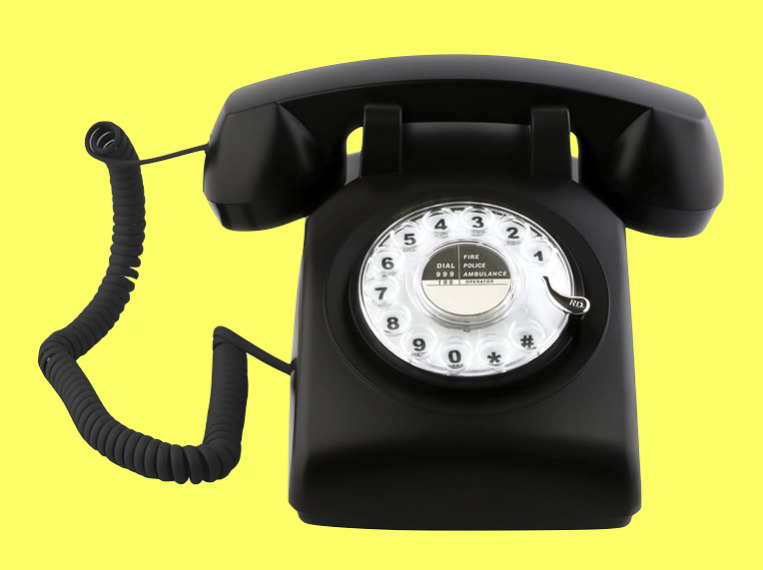
This ban came about after careful consideration and reflection on their values. The Amish value connections with family, friends, and the community. They don’t want to be the kind of person who interrupts a conversation by answering a telephone call. For this reason, telephones are located outside Amish family homes or nearby.
What are the things that are most important to you?
How does technology impact on those things?
Does it enrich those things or diminish them?
The Amish understand that technology can cause harm. Subsequently, they intentionally delay adopting new technology until they see its impact on others.
Does it destroy family life? Does it wreak havoc on their ability to pay attention and distract them from their spiritual life?
If so, the technology threatens their culture and religion, and for these reasons, it should be avoided.
Before adopting a piece of technology, the Amish need to be clear about two things:
1) The functionality of the technology (what it can do)
2) The potential social impacts of the technology
Once they deeply understand these things, it is then decided whether the technology is adopted or not.
It may come as no surprise that Amish people view the smartphone as an incredibly dangerous innovation. Many Amish communities have bans on this device.
How do you feel after spending time on social media?
Have you seen things posted on social media that weren’t true or were exaggerated?

When an Amish person wants to use a new technology, that technology will go through a formal decision-making process.
The community (in particular, the leaders) will consider the future with this technology. They’ll try to imagine how the technology could change their way of life.
Questions the Amish reflect on include:
• What are the advantages and disadvantages of the technology?
• What might come with it that we might not anticipate?
• Could someone get addicted to it?
• Is it a need or a want?
• Can the technology be restrained?
In her book Virtually Amish, Dr Ems provides the example of an Amish business owner asking the community leaders if he could have permission to use a label maker for his business.
After careful consideration, the leaders ruled label makers could be allowed for the following reasons:
• They are not addictive
• They can’t be used for recreational purposes (e.g., playing games or entertainment)
Think of a new technology (device or app) you want to adopt. Could it become addictive?
Many Amish people believe the issue is not whether you use a smartphone or social media but how you use it. It’s important that the Amish remain in control of their use of tech and place limits on it.
It’s also important that the technology is not visible (i.e., you don’t pull your smartphone out in Church or during a conversation). Being discrete in the way one uses technology shows respect for Amish values.
How do you use the tech in your life?
Are you in control of your use?

Amish people think about not just how they use the technology but what kind of person they become when they use it.
This point resonated with me deeply. I can’t say I’ve always liked who I become when I use certain technology.
A few years ago, I babysat my friends’ children when my friends went out for a kid-free meal. I look back and cringe when I think about how the experience unfolded.
Before going to my friend’s place to start babysitting, I got into a heated text discussion with some people in a group chat. Things were said that upset me.
For most of the night, I was on my phone, texting back and forth, not present with these young children. At one point, the little boy tugged on my arm to get my attention. “Aunty Jane, come play!” he said.
What can I say? I felt terrible. This certainly was not my finest moment. I had become the kind of caregiver I am usually quick to judge: distracted and disengaged.
I vowed to avoid trying to resolve issues by text and leave my phone at home next time to be fully present with the kids.
When you use social media, what sort of person do you become?
The Amish take modern tech tools and modify them to help them achieve their goals.
The plain mobile phone is an example of this. Amish people have created a mobile phone that can only make calls. It doesn’t have a camera, games, access to the Internet, or the ability to send text messages.
Similarly, the plain computer allows Amish to make spreadsheets, do word processing, and construct simple drawings. This allows them to complete tasks without being distracted by other things.
In other words, the Amish create what David Kadavy (author of Mind Management, Not Time Management) would refer to as sticky tools. A sticky tool allows you to stay focused on a task without getting distracted.
What sticky tools could you consider adopting (e.g., a basic flip phone and Internet blocker app)?

The Amish take pride in growing their own food, raising barns, baking their own bread, tinkering with robotics, inventing, and making their own clothes. They are not big consumers, but they embrace a simple lifestyle and encourage human creativity.
In the modern non-Amish world, many of us are doing the polar opposite of this. We have fallen into the trap of consuming content mindlessly online (e.g., watching people bake bread instead of baking our own bread).
Don’t get me wrong—the Internet is an excellent learning tool to help us build our skills. I have turned to YouTube for many instructional videos on how to make and fix things. But doing this requires discipline because it is all too easy to get derailed by other distracting videos.
The bottom line is this: the more time we spend online, the more ads we are likely exposed to and the more our consumptive desires are stirred up. Is it any wonder so many people feel so dissatisfied with their lives?
Instead of mindlessly consuming, what can you create today?
The Amish embrace tech with inbuilt friction. In fact, inconvenience is considered a virtue.
Dr Ems shares that many Amish technologies intentionally contain ‘speed bumps’ and ‘friction’. The reason for this friction is to prevent Amish people from wasting time on the device.

I’ve found this is one of the positives associated with using a ‘basic phone’.
Last year, I experimented with using a basic flip phone with limited functionality (I could only make calls and send texts). Texting on this phone was so painfully slow that it made me want to avoid getting into long text discussions with people. It was easier to pick up the phone and call people.
Using a smartphone to text your friends may be easier than making a phone call, but as the Amish strongly believe, easier is not always better.
How can you build friction into your tech use?
Can you embrace analog alternatives to decrease your screen time?
How much control do you have over your time, energy, and attention? As Chris Bailey writes in his book How to Calm Your Mind, “On the Internet, our intentions very quickly slip from our grasp.”
If you want to thrive online and offline, consider adopting some of the tech habits of the Amish. By limiting their tech use, the Amish have been able to remain mentally free and protect their way of life.
If more of us adopted Amish tech practices (e.g., being intentional with our tech use and placing limits on it), we’d most likely feel calmer and less anxious. We’d also spend more time engaged in activities that bring us joy and are aligned with what we value.
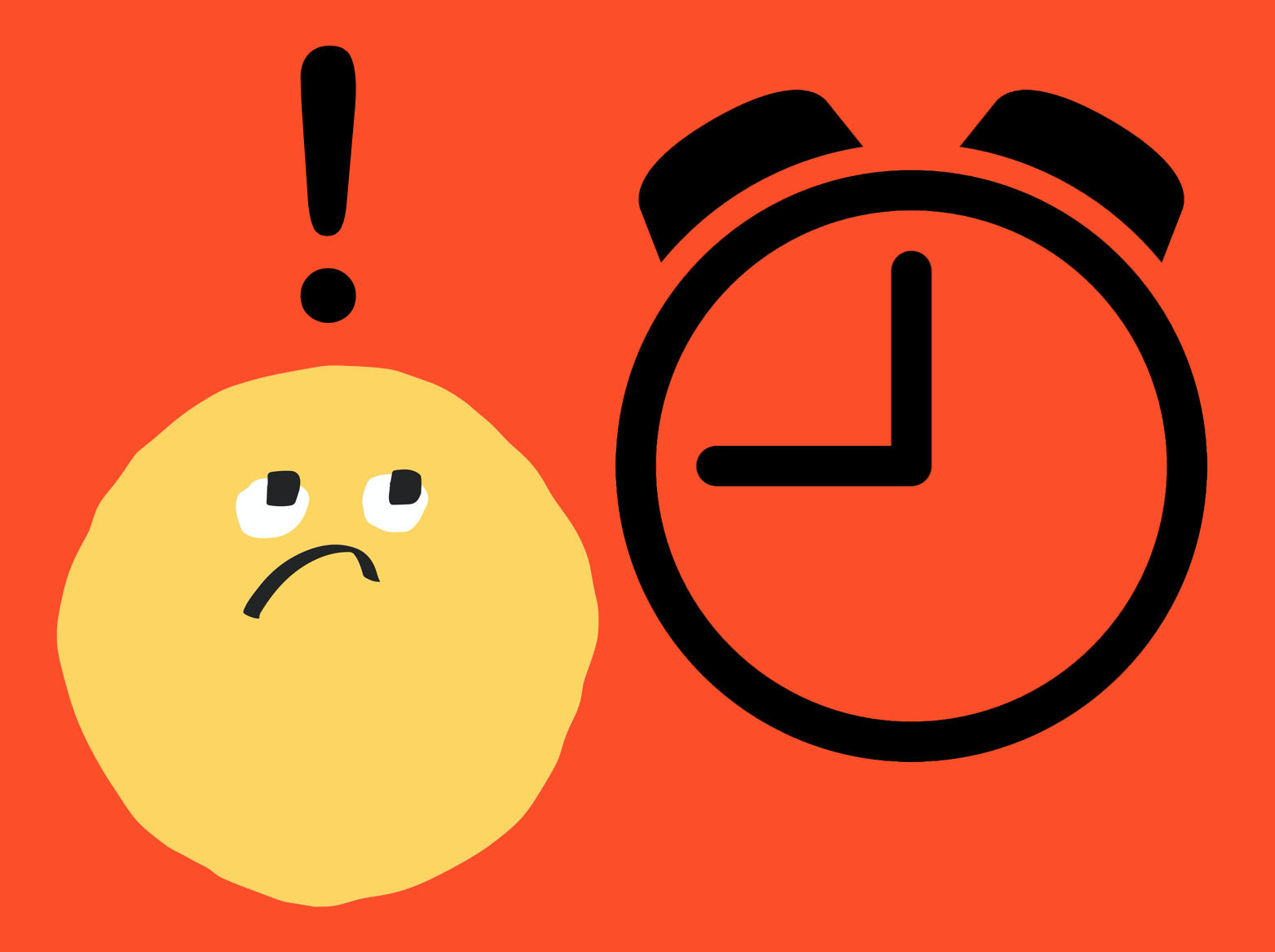
This is what my life used to feel like.
I was always in a rush.
Always cutting it fine.
Often running late.
I was late for class.
Late for dinner at friends’ houses.
Late for meetings.
In my world, being late was the norm. It was perfectly acceptable to drag your feet and rock up an hour late to an event.
So, I had to learn the hard way.
One morning, I was running late for school. I rocked up to form room three minutes late, and I knew straight away I was in trouble.
My form room teacher said:
“Jane, go to student services to get a late note. You’ve been late too many times. It’s not good enough”.
When you were told to go to student services, this was bad news. You were being told to do the walk of shame.
I pleaded with her:
“Please, no! Come on! It was my dad’s fault. He was late in driving me to school. My dad is always running late”.
My form room teacher wasn’t buying my excuses.
To this day, I can still remember that walk to student services. I felt frustrated and stressed out of my mind.
It wasn’t fun being late all the time. I wanted to be on time and feel less rushed and more in control. But I had no idea how to break this bad habit.
One thing was clear to me: people weren’t happy when I was late. People would get annoyed. Passive aggressive vibes were always coming my way.
Fast forward 20 years: I’m no longer someone who is always running late and rushing around. I’m certainly not perfect, but I can say I’ve come a long way.
From my experience, I can tell you it’s exhausting being someone who is always running late for things. When you live like this, you add so much unnecessary stress, drama, and anxiety to your day.
Your days take on a frenetic feel as you rush from one thing to the next.
But there’s also a larger cost to society.
This is what the famous Good Samaritan study examined. It looked at how being rushed and time pressured impacted people’s behaviour and thought processes.

In this fascinating study, researchers conducted a psychological experiment with a group of theology students who were training to be church ministers. This was one of those psychological experiments where participants were deceived (they were told the researchers were studying one thing when they were studying something else). Here’s what happened . . .
The participants were told they were participating in a study on jobs for theology students and were asked to fill in some questionnaires (this was the bogus part of the experiment).
The real experiment took part in the next phase . . .
After the questionnaires were filled in, the participants were told they had to deliver a presentation in another university building, which was a short walk away. The students were instructed they would need to tell the story of the Good Samaritan (a story about a Samaritan who helps a stranger who has been robbed, beaten up by bandits and left half dead).
They were handed a map and provided instructions on how to get to the building, which involved passing through a dim, dingy, and drab alley.
Students were placed in one of three groups:
• High-hurry group
• Intermediate-hurry group
• Low-hurry group
After they were handed the map, the students in the high-hurry condition were told:
“Oh, you’re late. They were expecting you a few minutes ago. We’d better get moving. The assistant should be waiting for you, so you’d better hurry. It shouldn’t take but just a minute.”
Students in the intermediate-hurry group were told:
“The assistant is ready for you, so please go right over.”
Students in the low-hurry group were told:
“It’ll be a few minutes before they’re ready for you, but you might as well head on over. If you have to wait over there, it shouldn’t be long.”
While the participants walked to the building where they’d be delivering the Good Samaritan story, they encountered a slumped victim in the alley. This victim was a plant by the researchers.
The victim was an actor who was pretending to be someone in need of help. The actor wore shabby clothes and was slumped in the doorway with his head down and eyes closed. He wasn’t moving.
All the students encountered this actor. As the students walked past, the actor coughed twice and groaned (you couldn’t miss him!).
The participants didn’t know that their behaviour was under surveillance. The researchers observed how the students in each group responded to the actor. Did the participants help the man slumped in the doorway? And if so, how did they help?
Here’s what they found . . .
Low-hurry group: 63% offered help
Intermediate-hurry group: 45% offered help
High-hurry group: 10% offered help
The researchers concluded:
“A person not in a hurry may stop and offer help to a person in distress. A person in a hurry is likely to keep going. Ironically, he is likely to keep going even if he is hurrying to speak on the parable of the Good Samaritan, thus inadvertently confirming the point of the parable. (Indeed, on several occasions, a seminary student going to give his talk on the parable of the Good Samaritan literally stepped over the victim as he hurried on his way!).”
As an aside, after the experiment, the participants took part in a debriefing session where they were told what the research was actually about. The researchers made it clear that they were studying the social forces (i.e. the conditions) a person finds themselves in, and they were not passing judgment on the students’ behaviour.
In life, we can’t always control the conditions we find ourselves in (e.g., a workplace that imposes a ridiculous workload on staff). But some things are often within our control that we can do something about to be less rushed and time pressured.
Doing these things can help us to feel more present, have greater awareness of our surroundings, feel calmer and less stressed, and experience more control of our time.
I’m going to share with you some habits, ideas, and practices you can implement to help you in this area. I’ll start with the simplest habits before progressing to the deeper, more complex practices.
One of the best tools you can buy is a basic watch (preferably one that doesn’t have fancy features like the ability to receive calls or texts).

My advice is to wear a watch and look at it regularly.
A lot of people use their phones to check the time, but this can be a time trap (I find my phone way too distracting).
You may look at your phone to check the time but find yourself checking social media while you’re at it. Without any stopping mechanisms in place, you can get sucked in and thrown completely off course.
Tiny Habit:When I wake up in the morning, I will put on my watch.
When I get distracted, I will check my watch and schedule and ask “What do I need to be doing right now?”
The modern world is a distracting place. Even without access to your phone, it’s easy to get derailed. Along with checking your watch regularly, check your timetable/planner/to-do list. Ask the following questions:
• What do I need to be doing right now?
• Am I doing what I need to be doing?
• Is this the best use of my precious time and energy?
Tiny Habit:When I notice I am wasting time, I will look at my to-do list.
A prompt is a reminder. It’s anything that triggers you to move from one task or place to another.
When I need to be somewhere by a certain time, I set my alarm for when I need to leave the house. When I hear the alarm, I grab my bag and take off. No excuses.
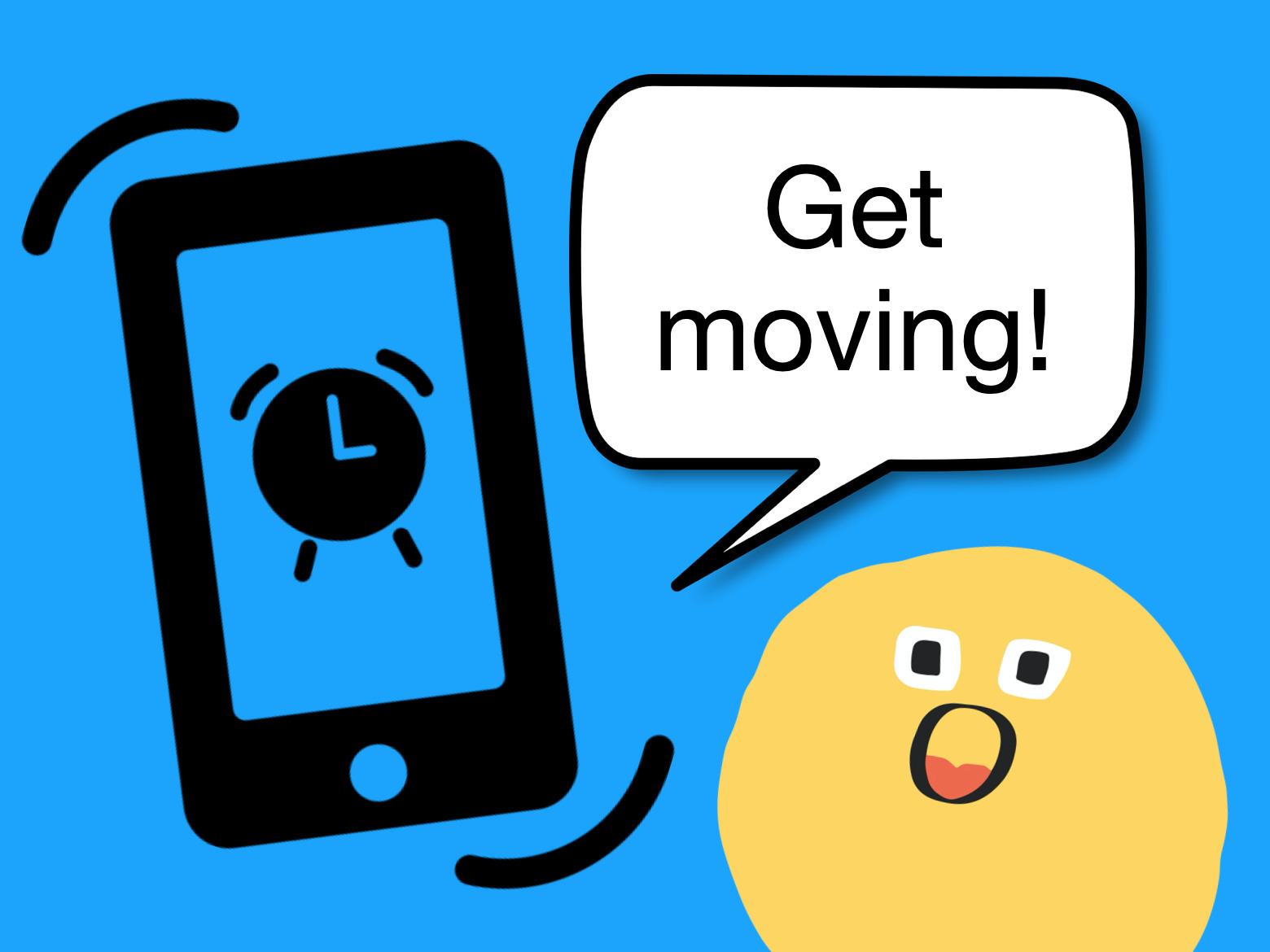
You should have a rough idea of how long it takes to get to school or work. Set your alarm for when you need to leave. When you hear your alarm, get moving.
Tiny Habit:
When I hear my alarm, I will pick up my bag and go.
It’s tempting to cram in a few more tasks before you leave for work or school (e.g., sending one more text or watching one more short video). But ask yourself, “Do I have time to do this?”
The answer is most likely no.
Tiny Habit:When I feel tempted to do another task, I will ask “Do I have time to do this?”
When I was a kid, there was no Internet and no smartphones. But we had morning cartoons on the TV.
These cartoons were fun to watch and could easily capture your attention. But you still had some awareness of the time because the time was always displayed in the corner of the screen.

The major problem with most social media apps is they don’t contain clear time cues. This is a deliberate design decision. They want you to lose track of time. Thirty minutes online can feel like three minutes.
The solution is to stay offline in the mornings. If you must go online, have a strict log-off time. I recommend setting an electronic timer for a set time or using an Internet Blocker app to kick you off.
I use an Internet blocker app called Freedom. This app cost me a bit of money but there’s a free alternative called Cold Turkey.
Tiny Habit:
When I feel the urge to go on social media in the morning, I will set a timer for 5 minutes.
Are you feeling time pressured and running late because you’re trying to do way too much?
Our modern culture encourages us to do more, be more, have more, sleep less, etc. It’s not healthy or sustainable.
If this is the case for you (i.e. you’re overcommitted), I realise it may not be your fault. Maybe your boss or teachers have unrealistic expectations about what you can accomplish in a day.
All that being said, your packed schedule may also be due to your inability to say no. Perhaps you feel like you need to say yes to every opportunity that comes your way to build an impressive resume and stand out from the crowd. If so, I get it (I’ve been there).
The major problem with doing too much is it leaves you feeling exhausted. You’re not able to fully engage in the task. As you do the activity, you’re worrying about the next thing you need to do.
If you’re doing a bunch of stuff and not enjoying it, perhaps it’s time to cut back on a few activities.
When you commit to doing less stuff (but more meaningful activities that align with your values), you can do that stuff better. You can also extract a lot more joy from the process.
Tiny Habit:
When I am presented with a new opportunity, I will ask “Is this important to me? Is it something I want to be doing with my time?”
In the book Excellent Advice for Living: Wisdom I Wish I’d Known Earlier, Kevin Kelly states:
“You don’t need more time because you already have all the time you will ever get; you need more focus”.

If you find yourself getting distracted by social media apps and YouTube, it’s time to double down on developing your focus muscles.
You can develop your focus muscles by adopting several different habits that relate to the food you put in your mouth, incorporating regular movement and rest breaks into your day, and creating a focus-friendly environment.
This is an area I’ve been working on for a while. What I’ve noticed is when I focus my mind on one task at a time, I can get twice as much done in the time I have available. But I also find that I enjoy the process a lot more, too.
Tiny Habits:
After I stand on my office mat, I will put away three objects on my desk (removing visual clutter)
When I notice my phone is on my desk, I will pick it up and put it in another room.
After I finish doing a deep work sprint (45 minutes), I will do some gentle shoulder rolls.
These habits may sound lame and boring, but they can inject a sense of power, control, ease and even happiness into your day.
When you’re less rushed, you’re less stressed. Because you’re less stressed, the people around you are also more likely to be less stressed (calm is contagious). It also means we end up with a more helpful and thoughtful society.
In our modern world, where we find ourselves increasingly polarised and tribalised, being less rushed and time pressured is something worth striving for.

If you find yourself watching random videos when you need to be studying, you’re not alone.
This behaviour is most likely due to the fact that you’re feeling stressed and tired.
When you’re freaking out about everything you need to do to prepare for exams, this rapidly depletes your willpower and energy. This is why you’re more likely to give into temptations and distractions.
Obviously, you need to get some rest (and you won’t get that sitting in front of a screen for hours on end).
But you also need tools and techniques to help you stay focused and create a buffer between you and the things that are likely to derail you and hijack your attention.
I recommend checking out Stanford university’s clever website Screentime Genie.

Screentime Genie is a big collection of screen time reduction strategies. But you won’t be left feeling overwhelmed by these tools and techniques. Here’s how it works . . .
You answer a few basic questions about the tech habits you want help with (this takes less than a minute to do). The Screentime Genie then presents you with a tailored selection of techniques to explore.
For example, let’s say you want help in the following areas:
1) Social media – I waste time on social media
2) Distractions – I get distracted while working
3) YouTube – I waste too much time watching YouTube
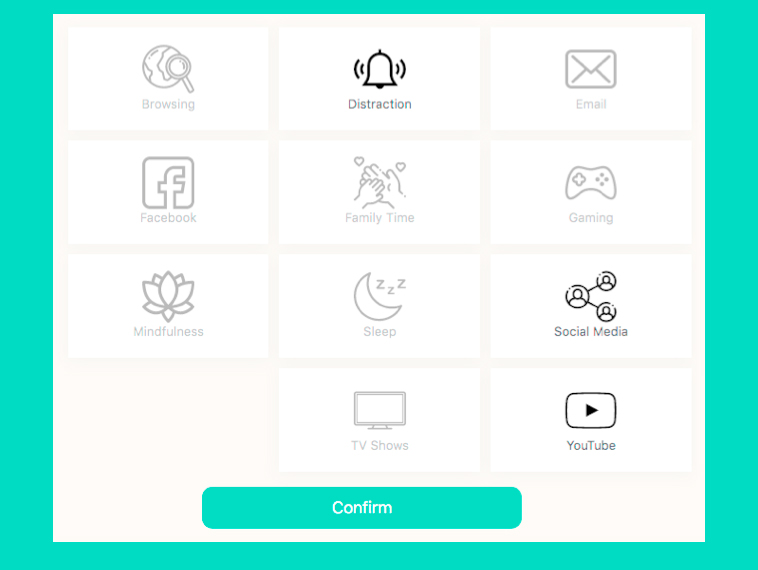
After answering questions about the specific platforms you use as well as your motivation levels to change (low, medium, or high), Screentime Genie pulls up from its collection the most appropriate techniques to match your current situation and motivation levels.
It recommends that you just select 2 or 3 strategies to begin with.

Professor BJ Fogg says that there are over 150 different strategies to cut down on screen use on the backend of this website. But you’ll only ever be presented with a small selection of strategies.
I think the decision to present only a few strategies at a time is smart. Imagine being presented with a list of 150+ different strategies all at once. Kind of overwhelming, right?
But when you’re only presented with a handful of strategies, you’re more likely to select one or two and actually do something. And doing something is always better than doing nothing!

My only criticism of Screentime Genie is that some of the suggestions are a little tame and don’t go far enough. For example, there is a suggestion to delete social media from your phone and only have it on your computer. But I couldn’t see any suggestion to delete your social media accounts.
My guess is that the creators of Screentime Genie probably think the idea of deleting all your social media accounts is just way too extreme to put out there. But it’s not really that extreme when you think about it.
Back in 2017, Former Vice President of User Growth at Facebook Chamath Palihapitiya stated in a speech at the Stanford Graduate Business School that he no longer used social media (at the time he said he had posted less than 10 times in seven years). He said:
“If you feed the beast, that beast will destroy you. If you push back on it, you have a chance to control it and reign it in. And it is a point in time when people need to hard break from some of these tools, and the things that you rely on.
The short-term dopamine driven feedback loops we’ve created are destroying how society works. No civil discourse, no cooperation, misinformation, mistruth . . . it is eroding the core foundations of how people behave, by and between each other. And I don’t have a good solution. My solution is I just don’t use these tools anymore. I haven’t for years.”
I also haven’t used these tools (i.e., social media) for nearly 2 years now. I can tell you this is the simplest solution to dramatically cutting back on your screen time. And it’s one worth seriously considering.
For many years, I experimented with using lots of different plugins, Internet blocker apps, and programs to help reduce my time online (particularly on social media). These tools stopped me from getting completely screen sucked and allowed me to focus on pursuing my goals. But it took time to research, use, and manage all of these tools (and that was time with my eyes glued to a screen).
For some strange reason, it never occurred to me to just delete all my social media accounts. The penny only dropped when I read Jaron Lanier’s book 10 Arguments for Deleting your Social Media Accounts Right Now.

Lanier states:
“To free yourself, to be more authentic, to be less addicted, to be less manipulated, to be less paranoid . . . for all those marvellous reasons, delete your accounts.”
So, I hit delete.
This simple act gave me hours of my life back. It helped me to reclaim my brain. Life became simpler, too.
For this reason, I believe Screentime Genie could go further by including Jaron Lanier’s suggestion to “detach from the behaviour-modification empires [social media] for a while.” And he’s not talking about a 2-3 day digital detox like Screentime Genie suggests. Lanier is telling you to detach for at least 6 months.
But even if you do decide to delete social media from your life, this doesn’t mean you’re rejecting the Internet and all screens. You’ll still find yourself looking at and/or touching a screen hundreds of times per day (e.g., watching shows, reading the news, responding to text messages, and checking your email). Screentime Genie can help you in these other areas.
Overall, Screentime Genie is a fabulous free resource that can assist you to cultivate a healthier relationship with technology. It provides an extensive range of strategies to reduce your screen time and be more mindful and present. So, why not give Screentime Genie a shot?
See for yourself if this little web Genie can make some of your screen time wishes come true.
Dr Jane Genovese delivers interactive sessions on learning to learn, combating procrastination, exam preparation, how to focus in the age of distraction, habit formation and much, much more!
Get FREE study and life strategies by signing up to our newsletter:
© 2024 Learning Fundamentals